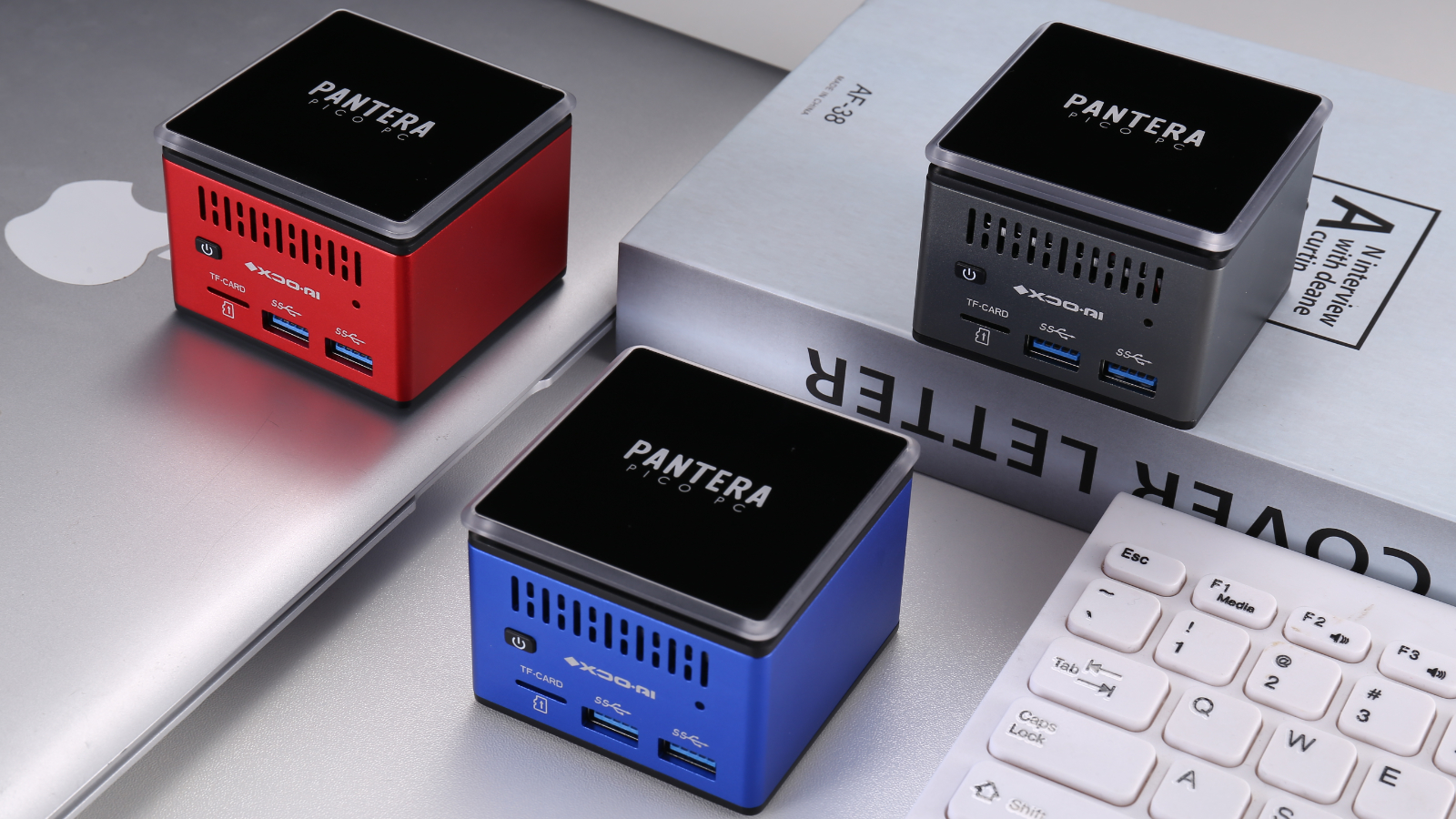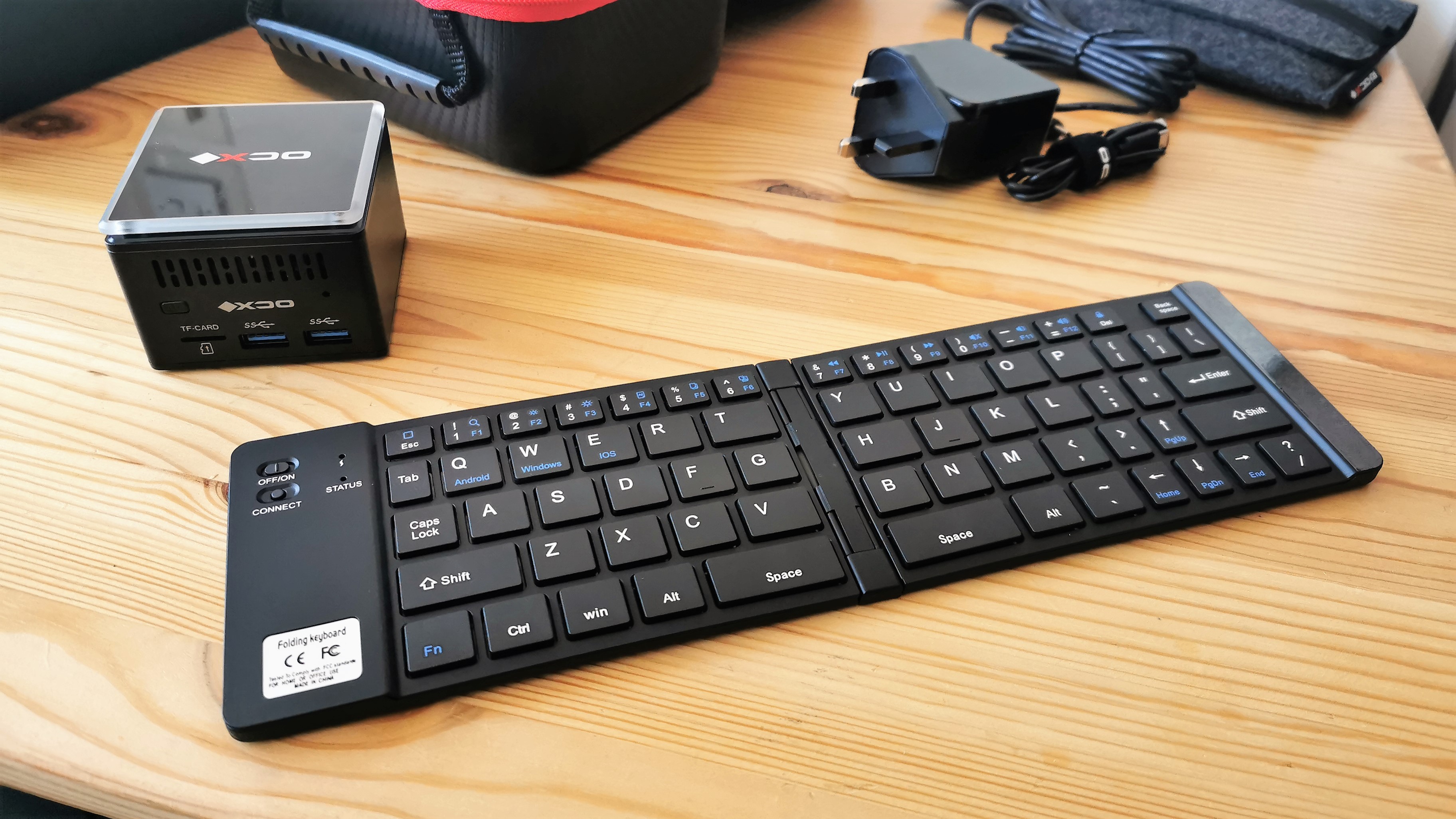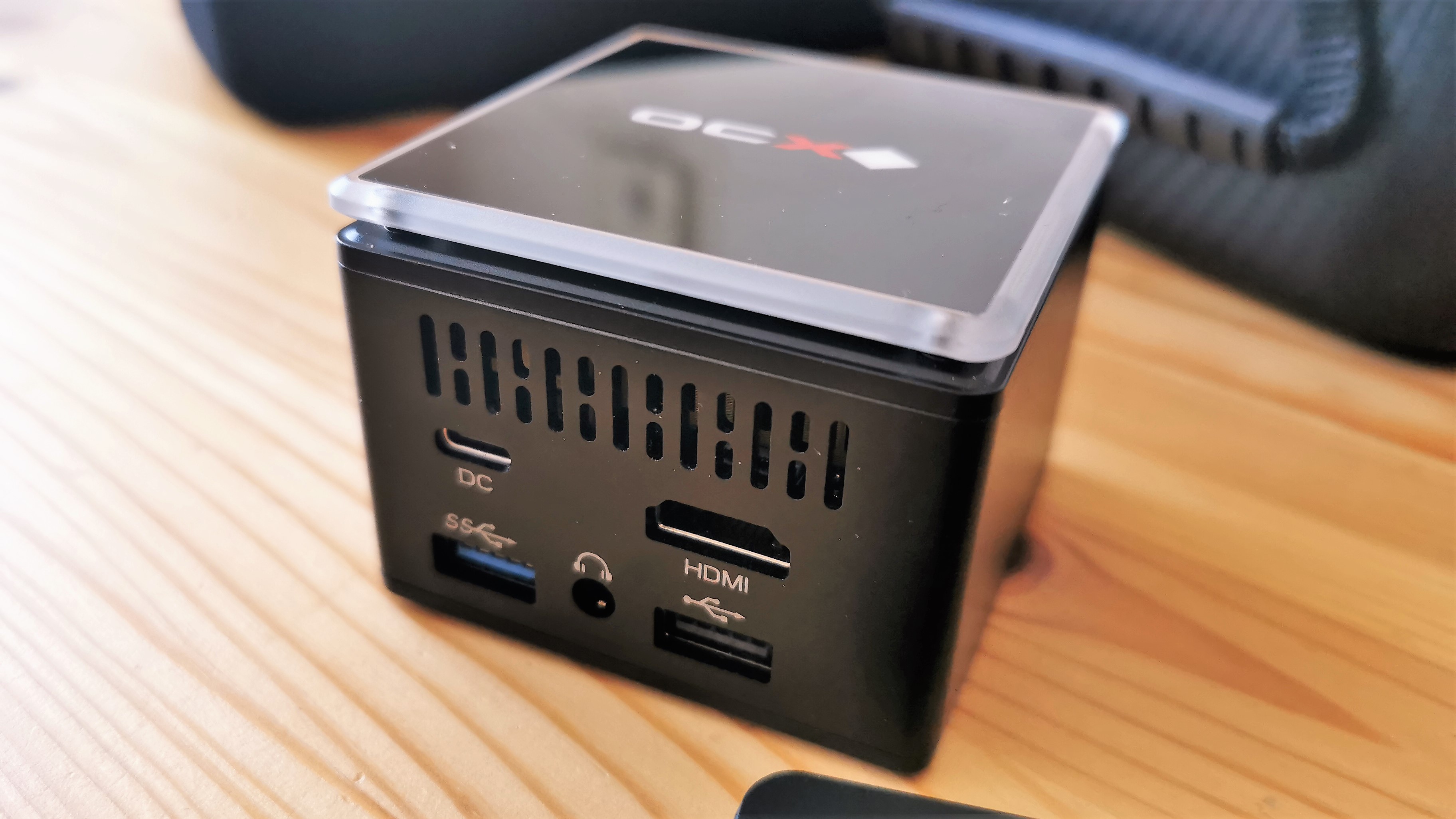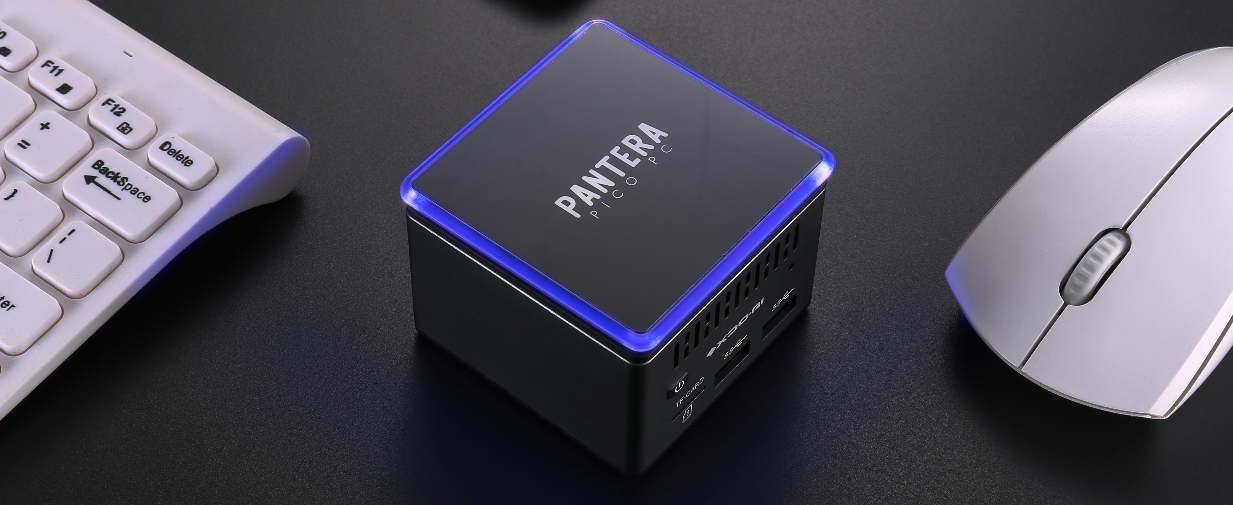TechRadar Verdict
The Pico PC is an exciting product. But we’d prefer that hardware developers had the confidence in their products to take risks and not expect prospective customers to shoulder some of it. For the low cost, it has some potential.
Pros
- +
Incredibly small
- +
Inexpensive
Cons
- -
The Pico PC is small, but the rest of the PC isn’t
- -
Using Kickstarter as a funding mechanism
- -
No LAN port
Why you can trust TechRadar
According to the bio, XDO Tech is the collaboration between engineers, programmers and industrial designers, all of which love computing devices.
It doesn’t mention if they’re any good as this passion or what they’ve made before, but the sample they provided for review shows that they have some skills in designing and assembling complex devices.
We’ve seen the Intel NUC designs and were impressed how a PC can be compressed into something that small, but these are gargantuan when compared to the Pantera Pico PC that XDO has created.
But is this micro sizing merely a gimmick, or is the Pico PC ringing the bell on the era of a floor sitting PC?
Price and availability
This product isn’t released through the usual model of retail availability. Instead, it is being distributed using a Kickstarter campaign.
And, as Kickstarters usually involve, you can invest in this project and depending on the level of investment, you get a better Pico PC should the campaign be successful.
We should point out that if it isn’t, then you might get nothing irrespective of what level of support you provide. Kickstarts aren’t guaranteed to be successful, and from a certain perspective, it's gambling.
Sign up to the TechRadar Pro newsletter to get all the top news, opinion, features and guidance your business needs to succeed!
The cheapest pledge doesn’t get you a Pico PC, but just the warm fuzzy feeling that you helped some Hong Kong entrepreneurs by giving them 100 HK$ (about £10).
Pledge 1,159HK$ (£108 or $149), and you get a Pantera Pico PC from a selection of colours with 4GB of RAM and 64GB of ROM. And, if this design is available in retail after the campaign ends, it will cost roughly $210.
The next level offers 8GB of RAM and a 256GB SSD for 1,391HK$ (£130 or $170), and above that price point, the amount of RAM and storage increases progressively. They also offer ‘double packs’ where you get two and even a package where they include another of its Kickstarter products, a Pico projector.
Currently, they predict that the machines will ship in November, and those interested in backing this campaign will find it here.
Our review hardware was the 8GB RAM and 256GB SSD combination, and also included was an XDO branded folding keyboard, an EVO small EVA case and an unbranded small carry case.
These accessory items cost around less than $20 each and can be added when choosing a system. The Pico PC also comes in seven colours to choose from.

Design
Saying that this PC is small is an understatement as it's hard to imagine that it could be made much smaller and still have room on the surface for the ports it requires to operate.
The slightly squashed cube measure just 69mm wide, 69mm deep, and just 53mm high, and that small box contains the entire system, including CPU, GPU, RAM and storage.
Power comes from a USB-C power supply that outputs 12v at 2A, much like a typical phone charger might. With that power connection, it is possible to power this system with a phone/tablet power pack in an emergency.
The front face has the power button, vents, a reset hole, a MicroSD card slot and two USB 3.0 ports. Everything else connects on the rear, including the USB-C power inlet, rear vent, two more USB ports (3.0 and 2.0), a 3.5mm headphone jack and HDMI out.

The Pantera Pico PC is actively-cooled with a small silent fan mounted on the heatsink. Air circulation appears to be passive, making it silent in operation . The top of the diminutive PC has an acrylic panel with the OCX logo that illuminates when the unit is on.
The port that we expected to see but didn’t was a Gigabit LAN port, but the Pico PC has WiFi included, so it can network without this feature. Or you could use one of the USB 3.0 ports with an adapter to add that.
Our review machine came with Windows 10 pre-installed, but XDO will put Linux on if you’d prefer that OS.

Hardware
Here are the full specs of the Pantera Pico PC:
CPU: Intel Celeron J4125 2GHz
Graphics: Intel UHD 600~
RAM: 8GB LPDDR4
Storage: 256GB SATA SSD
Ports: 3 x USB 3.0, 1 x USB-C, 1 x HDMI, 1x Audio Jack, MicroSD card slot
Connectivity: Intel AC-9462 802.11ac Wi-Fi, Bluetooth 5.1
Weight: 177g
Size: 53 x 69 x 69mm (H x W x D)
When you design a system this tiny, numerous practicalities come into play that eliminates hardware choices purely on size, power consumption and heat dissipation.
There isn’t enough room in here for a desktop CPU, a full stick of DDR4 with 288 pins, an elaborate cooling system or even a 2280 M.2 NVMe drive.
To address some of these limitations, XDO engineers went with an Intel Celeron J4125 processor clocked at 2GHz, boosting to 2.7GHz on a single core. Intel designed this quad-core SoC primarily for mini PCs with passive cooling in mind, making it an ideal choice.
It can use LPDDR4 RAM in the SoDIMM laptop packages, up to 8GB, and a SATA drive can be connected through an M.2 SATA slot.

The CPU incorporates a UHD Graphics 600 (Gemini Lake) GPU, clocked at 750Hz and with 12 execution units, a derivative from the UHD Graphics 500 series (Apollo Lake).
Storage is either an inbuilt flash module on the lowest specified SKU or a 2242 M.2 SATA SSD slick for the more capable options.
In the XDO FAQ the upgradability of this aspect is covered, and it can be swapped by the user. But we didn’t see any easy or obvious ways into our Pico PC, so how you achieve this, we’re unsure. It is probably better to get XDO to put a 1TB drive inside if that is how much space you expect to need. The biggest 2242 M.2 SATA drives we’ve seen are 2TB.
In use and performance
When the review machine arrived, it had Windows 10 Home pre-installed, one of the irritating versions where Cortana won’t shut up throughout the setting up phase.
Due to the relatively low level of performance, we’d strongly recommend that if you intend to use Windows on the Pico PC that you allow it to chew through the seemingly endless list of updates a new install needs to digest.
Otherwise, you’ll have an experience where things stop and start abruptly and even reboot while you are trying to use it.
Once all those activities have subsided, a few hours at a minimum, the Pico PC is very useable if you don’t overstress the processor of GPU with too many concurrent tasks.
On a more powerful system, it is tempting to take a running task and push it to the background and work elsewhere. Doing that on this system can result in temporary lockups or stuttering, as each of the four cores can only handle a single thread.
Once you’ve adapted to a more sympathetic working style, the Pico PC chugs along nicely and has sufficient power for most office tasks.
The portability of this solution is excellent, but only if you don’t need to bring a monitor with you. XDO has a Pico projector that can be used alongside the Pico PC to make the whole system easy to take on a trip without needing heaps of other hardware.
Here’s how the XDO Tech Pantera Pico PC performed in our suite of benchmark tests:
CPU-Z: 164(single-thread); 639.2 (multi-thread)
Geekbench: 443 (single-core); 1445 (multi-core); 1468 (compute)
CrystalDiskMark: 507MBps (read); 373MBps (write)
Cinebench R23: 437 pts single core; 1345 pts multi-core
Novabench: 685
PCMark: 1738
3DMark: 131 (Timespy); 454 (Firestrike); Wild Life (1141)
Atto: 329MBps (read, 256mb); 441MBps (write, 256mb)
Windows Experience Index: 4.3
With a Celeron CPU and its integrated Intel UHD Graphics 600 GPU, we weren’t expecting anything spectacular from the Pico PC, and ultimately it held no surprises.
The lacklustre performance of this system is the direct result of its low wattage profile and physical limitations.
Having a quad-core CPU with a relatively small cache means that the standard 2GHz speed doesn’t achieve much, and even boosting to 2.7GHz makes little difference.
However, it is easy to say that maybe a different CPU might have been a better option, but realistically anything more powerful could have easily tipped the power consumption and heat generation scales that are so finely balanced in this design.
These limitations are amplified in the GPU, since this is part of the same silicon package as the CPU. With just 12 execution units and a clock speed of 700Mhz, the UHD Graphics 600 isn’t going to offer much to anyone who uses graphics-intensive applications or plays games.

One Intel claim that XDO repeats is that this GPU can drive a 4K display, and technically it can. But being able to see a 4K desktop and effectively use it are different things, and we found that this system struggled to handle a high bitrate 4K file from a WiFi-connected NAS and play it smoothly.
Interestingly, the same file connected via an external hard drive played flawlessly, demonstrating how fine the line can be between success and failure where performance is concerned.
What it can do is stream 4K nicely from YouTube and other service providers, assuming you have good enough wireless reception.
The biggest graphical weakness is 3D rendering, with some of the lowest 3DMark scores we’ve seen, including those from laptops. Unless you are prepared to use 720p resolution and disable many effects and details, then 3D gaming with this GPU isn’t a viable option.
The internal SATA SSD wasn’t the fastest we’ve seen, but equally, it wasn’t bad for an OEM part. We suspect the 500GB and 1TB options might perform better at writing than the 256GB part, but that’s an assumption on our part.
Overall, it is best to gauge the performance of the Pico PC in the context that it only consumes a little over 10 watts and that it remains useable for many simple computing tasks.
Just don’t expect to run 3D games smoothly, use it for CAD, or overburden it with multiple multi-threaded applications.
Final verdict
The Pantera Pico PC is an interesting product, even if we remain unconvinced that Kickstarter is the right place to release it.
We’re entering a grey area where established companies use Kickstarter as a marketing tool, and we’ve seen this with Creality, Elegoo and others. That’s not what Kickstarter was meant for, and we’re curious why it wasn’t funded through more conventional channels.
Whatever the story, the Pico PC does deliver on being a remarkably small computer that it is relatively easy to bundle up its soft case and transport easily to wherever you might need it.

However, the scale of the system is dwarfed by all the other peripheral items you might need can’t be scaled down much. Once you’ve got a keyboard, mouse and monitor to bring, the size of the PC becomes less of a factor. A cheap Chromebook might be even more portable when you consider these peripherals.
Regarding the specification, this is very much the technology that we’ve seen appearing in monitor-mounted micro-PCs for a while. Its low power consumption profile and adequate performance for general computing tasks underline how the modern PC is generally over-specified for the jobs it most often performs.
With sufficient RAM and enough storage for the apps and data, the Pico PC could easily be used for office work, educational computing, and general internet activities.
Despite what XDO claims in their promotional material, we’re unconvinced that the Intel HD graphics driven by the Celeron J3125 has enough power to make this an ideal gaming platform unless you only play titles with simple graphics.
And, critically, the trade-off for the small size is that the memory capacity or storage can’t be expanded by the user much to handle more demanding tasks.
Overall, the Pantera Pico PC is an exciting glimpse into the future of the PC and how current notions of physical size might be dramatically overturned.
And, while it doesn’t offer the performance levels that some users demand, that gap is narrowing daily.
- We've also featured the best thin clients
Mark is an expert on 3D printers, drones and phones. He also covers storage, including SSDs, NAS drives and portable hard drives. He started writing in 1986 and has contributed to MicroMart, PC Format, 3D World, among others.

